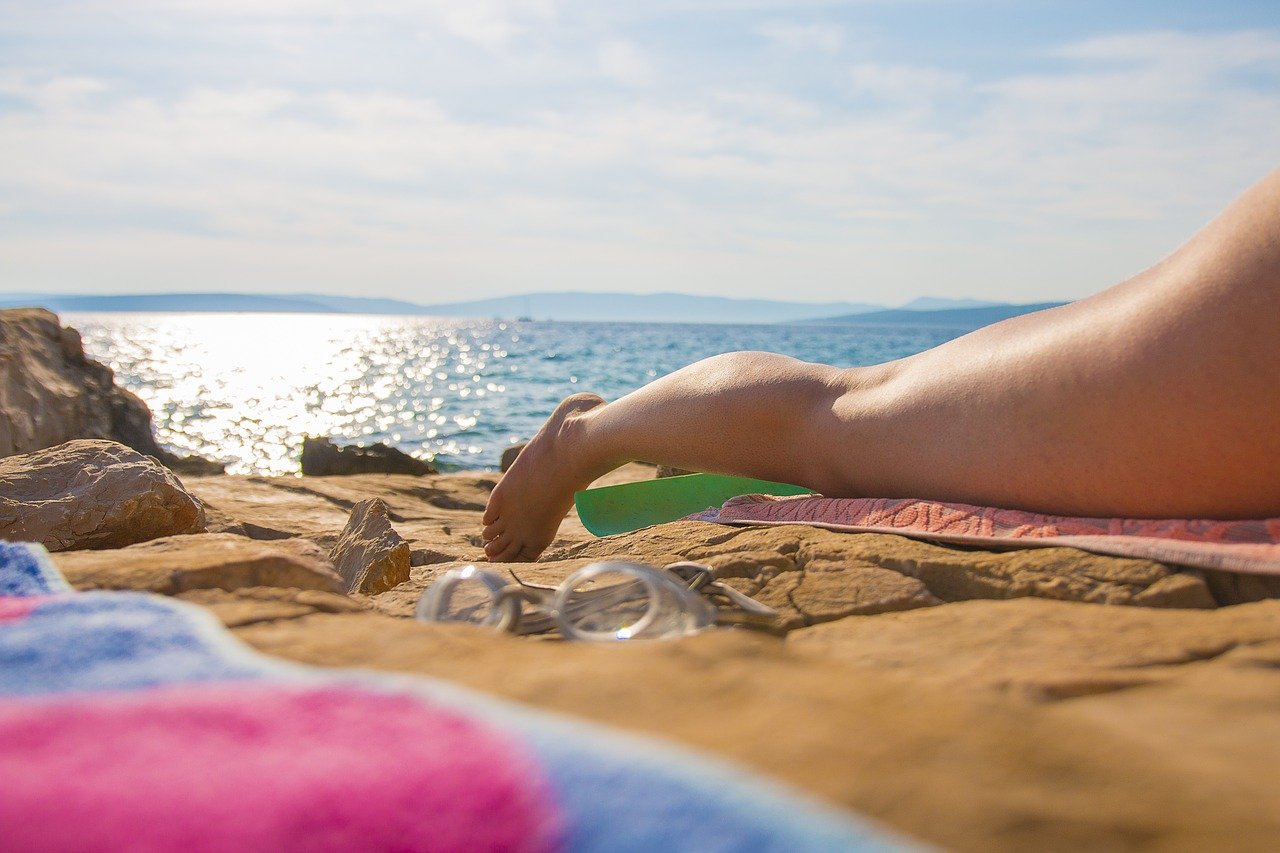A perfect tan? Discover our secrets
It's possible to get a "perfect" tan, i.e. one that looks natural and matches your skin type or complexion. However, tanning is a long process that must respect our solar capital. It is limited and specific to each individual.
A reminder of tanning mechanisms and the skin
Tanning is our skin's defense mechanism against exposure to UV rays. The result is a general darkening of the skin, or of a localized area: freckles. It's the skin's defense system against the sun, and is made possible by the intervention of specialized cells in the layers of the epidermis: melanocytes and keratinocytes.
Pigments called melanins are synthesized by melanocytes. There are two types: eumelanins and pheomelanins. These pigments determine the color of skin, hair and body hair. Melanin levels in the skin differ from person to person. This in turn determines a unique skin color.
Under the action of UVA and UVB rays, cell metabolism speeds up so that melanocytes can synthesize more melanin pigments than normal. As a result, our skin turns brown. The higher the melanin level, the better the skin adapts to the sun's environment. In fact, melanin helps filter out 90% of UVB and a few percent of UVA. Faced with the action of UV rays, the skin's keratinocytes multiply, making the skin thicker, more resistant and, above all, stronger. This makes it less permeable to radiation.
This means that the more tanned you are, the more protected your skin will be.
Some advice from the Tahitians
To tan well, you need to take your time
Note that tanning should be acquired gradually. You need to be patient. You need to expose yourself to the sun regularly and gradually, over several days. This will prevent your skin from burning. It will also protect your skin from dryness. Everyone is sensitive to UV radiation. This is called phototype. Fair skin is more sensitive to the sun. So you need to protect it and use a suitable IP.
SPF helps to prolong the time spent in the sun before sunburns occur. Whatever SPF you choose, you need to apply it frequently. This is best done every hour, or after every swim. You'll find various protective products in spray, cream, milk, oil or stick form. Depending on your tastes and the quality of your skin, you'll find several different textures.

Eat to tan
A good tan also depends on your diet. Exposure to the sun can be beneficial if you know how to moderate it. But its disadvantage is very real. It results in the absorption of free radicals that promote premature aging of your skin. To avoid this, you need to encourage the absorption of foods rich in vitamin C and E, such as seasonal fruit, broccoli and spinach. Don't hesitate to eat olive oil. And don't skimp on foods rich in fatty acids such as Omega 3. All these elements will help to soften your epidermis, shielding it from the sun's harmful rays.
Don't forget to drink plenty of water, as hydration also comes from within. Don't hesitate to drink good fruit juices and tea, which are good allies against the sun. You also need to fill up on carotenoids to stimulate melanin and vitamin A. Carrots, tomatoes, mangoes, peaches, apricots and so on. You can also take anti-radical and vitamin A-rich food supplements. You can take them as a course of treatment before exposure to the sun.
Scrubbing and moisturizing: what you need to face the sun
You need to exfoliate your skin to prevent dead cells from accumulating into thick, dull skin. You should exfoliate your tanned skin once a week. And don't forget to nourish your skin. You need to moisturize in the morning, evening and especially after each exposure to the sun. You can alternate between different types of cosmetics, such as creams, milks, oils, balms and butters. For supple, smooth, elastic skin with a long-lasting tan, you need to provide your skin with both water and oil. Choose vegetable oils rich in vitamins, omegas and fatty acids, such as monoi oil or virgin coconut milk oil. Balms, milks and creams provide both oil and water to the skin. You can use monoi, shea or vanilla balms, as well as nourishing milks.

 en
en 





